Rice pilaf is a timeless dish that brings warmth and comfort to any table. This versatile dish is not only easy to prepare but also boasts an incredible array of flavors that can complement virtually any main course. Whether you’re hosting a dinner party or simply preparing a weeknight meal, learning how to make the perfect rice pilaf will elevate your culinary skills.
This delicious recipe transforms plain rice into a fragrant and fluffy side dish that can be customized with various ingredients like nuts, vegetables, or spices. With just a few core ingredients and some simple techniques, you can master this classic dish in no time. In this article, we will explore the essential components of making rice pilaf, provide step-by-step instructions for preparation, and share tips on how to serve and store your creation.
Get ready to impress your family and friends with this delightful rice pilaf recipe that is sure to become a staple in your home cooking repertoire!
Main Ingredients
Long-Grain Rice
Long-grain rice is the star of this dish. It has a light texture and remains separate when cooked, which is ideal for pilaf. You will need 1 cup of long-grain white rice for this recipe. Rinsing the rice before cooking helps remove excess starch that can make it gummy.
Chicken Broth
Using chicken broth instead of water adds depth of flavor to your rice pilaf. You will need 2 cups of low-sodium chicken broth. If you prefer a vegetarian option, vegetable broth works just as well. The broth infuses the rice with savory notes that enhance the overall taste.
Onion
One medium onion (about 1 cup diced) adds sweetness and aroma to the dish. Sautéing onions until translucent brings out their natural sugars, creating a rich base for your pilaf. Make sure to chop the onion finely for even cooking.
Garlic
Two cloves of minced garlic infuse the dish with robust flavor. Garlic complements the other ingredients beautifully while providing health benefits such as boosting immunity. Add the garlic after the onions have softened to avoid burning.
Butter
Two tablespoons of unsalted butter add richness to your rice pilaf. The butter enhances the texture while also imparting a subtle flavor that ties all ingredients together. You can substitute olive oil for a healthier alternative if desired.
Spices
A pinch of salt and pepper are essential for seasoning your dish; additionally, consider adding 1/2 teaspoon of cumin or turmeric for extra flavor and color. These spices give your pilaf an aromatic twist while enhancing its visual appeal.
How to Prepare Rice Pilaf
Step 1: Sautéing Aromatics
Begin by heating 2 tablespoons of butter in a medium saucepan over medium heat. Once melted, add one diced onion and sauté it until it becomes translucent—about 3-5 minutes. Stir occasionally to prevent burning. Once soft, add two minced garlic cloves and continue sautéing for another minute until fragrant but not browned; overcooked garlic can turn bitter.
This step is crucial because it creates a flavorful base for your rice pilaf. The combination of buttery onions and garlic creates an aromatic foundation that sets the stage for the rest of the dish.
Step 2: Toasting the Rice
Next, add 1 cup of rinsed long-grain white rice directly into the pan with sautéed onions and garlic. Stir well to coat each grain in the buttery mixture; toast the rice for about 2-3 minutes until it turns slightly golden brown—this adds nuttiness to your final product.
Toasting the rice enhances its flavor profile while helping it maintain its shape during cooking. Ensure that you stir continuously so all grains are evenly toasted without letting them burn.
Step 3: Adding Liquid and Seasoning
After toasting the rice, slowly pour in 2 cups of chicken broth (or vegetable broth) into the saucepan while stirring gently; ensure you scrape up any bits stuck at the bottom from sautéing earlier as they contain intense flavors.
Once combined, add salt (about 1/2 teaspoon) and freshly ground black pepper (to taste). Optionally include spices like cumin or turmeric at this point if you’re looking for additional flavor layers; these spices complement both chicken broth’s savory notes and create beautiful color in your final dish.
Step 4: Cooking
Bring everything to a gentle boil over medium-high heat without covering it initially; once boiling occurs reduce heat down low enough so it simmers softly (do not lift lid during cooking). Cover tightly with a lid ensuring steam does not escape—let cook undisturbed for about 15-20 minutes until liquid has been absorbed completely by grains—the result should be fluffy!
This step allows all flavors meld together beautifully while keeping moisture locked inside—the goal here is perfectly cooked tender grains bursting with aroma throughout!
Step 5: Fluffing & Resting
Once done cooking remove from heat but keep covered allowing resting time between five – ten minutes before uncovering—this will help finish steaming process allowing leftover moisture redistribute evenly among grains creating fluffiness we desire!
After resting period lift lid then use fork gently fluff up grains breaking apart any clumps formed—it’s important not stir too aggressively as you want preserve integrity each grain might have formed during cooking process!
Your delicious homemade rice pilaf is now ready!
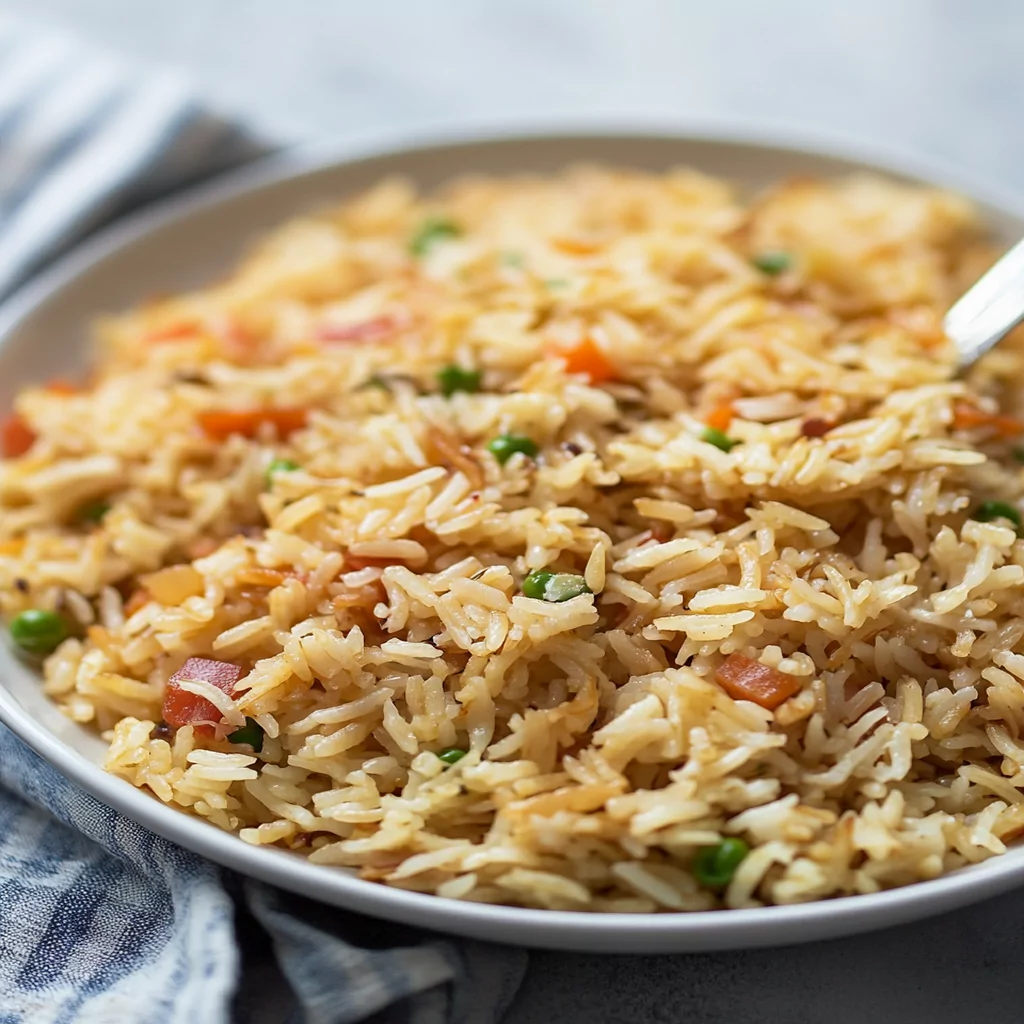
Serving and Storing Tips
Serving Suggestions
Rice pilaf makes an excellent side dish alongside grilled meats like chicken or lamb; it pairs beautifully with roasted vegetables or fish too! Consider garnishing with freshly chopped herbs such as parsley or cilantro right before serving—these vibrant additions elevate presentation visually while enhancing flavor profiles further!
You can also transform this classic recipe into a complete meal by incorporating proteins such as chickpeas or shredded chicken directly into cooked mixture—simply fold them in once finished—it’s nutritious hearty option everyone will enjoy!
Serving warm ensures maximum flavor release but feel free serve at room temperature if preparing ahead time; leftovers reheat wonderfully making them great option lunch next day!
Storage Guidelines
For any leftover pilaf allow cooling completely before transferring into airtight container—you may refrigerate up-to four days safely stored properly! To reheat simply sprinkle water over top before microwaving until heated through again preserving moisture added during initial cook-time!
If planning longer storage consider freezing portions instead—place cooled portions into freezer-safe bags flatten them out for efficient storage space-wise—they can last up-to three months stored correctly! When ready enjoy thaw overnight fridge reheat following same method mentioned earlier!
By following these serving tips along with proper storage guidelines you’ll be able maximize freshness quality enjoying delightful flavors derived from homemade aromatic rice pilaf every time!
Mistakes to avoid
One common mistake when preparing rice pilaf is not rinsing the rice before cooking. Rinsing removes excess starch, which can make your pilaf gluey rather than fluffy. Always rinse your rice under cold water until the water runs clear. This simple step ensures that the grains remain separate during cooking, resulting in a light and airy texture.
Another frequent error is using too much liquid. The ratio of liquid to rice is crucial in achieving the perfect pilaf. Typically, a 1: 2 ratio of rice to liquid works well for most types of long-grain rice. If you add too much liquid, your pilaf may turn out soggy and unappetizing. Additionally, always remember to bring the liquid to a boil before adding the rice; this helps achieve optimal cooking conditions.
Failing to season adequately can also ruin your dish. Rice pilaf should be flavorful and aromatic. Before adding the liquid, sauté onions or garlic in butter or oil, allowing their flavors to infuse into the base. Also, consider adding spices like cumin or bay leaves for extra depth. Neglecting this step means you could end up with bland rice that doesn’t capture the essence of pilaf.
Another pitfall is overcooking the rice. Once you’ve added the rice to boiling liquid, reduce the heat and cover it tightly. Cooking time varies depending on the type of rice used, but generally, it takes about 15-20 minutes for long-grain varieties. Overcooking results in mushy grains that lack texture and bite.
Lastly, skipping resting time after cooking can affect your pilaf negatively. Once done, remove it from heat and let it sit covered for about 10 minutes before fluffing with a fork. This resting period allows steam to redistribute moisture evenly throughout the grains, enhancing flavor and texture.
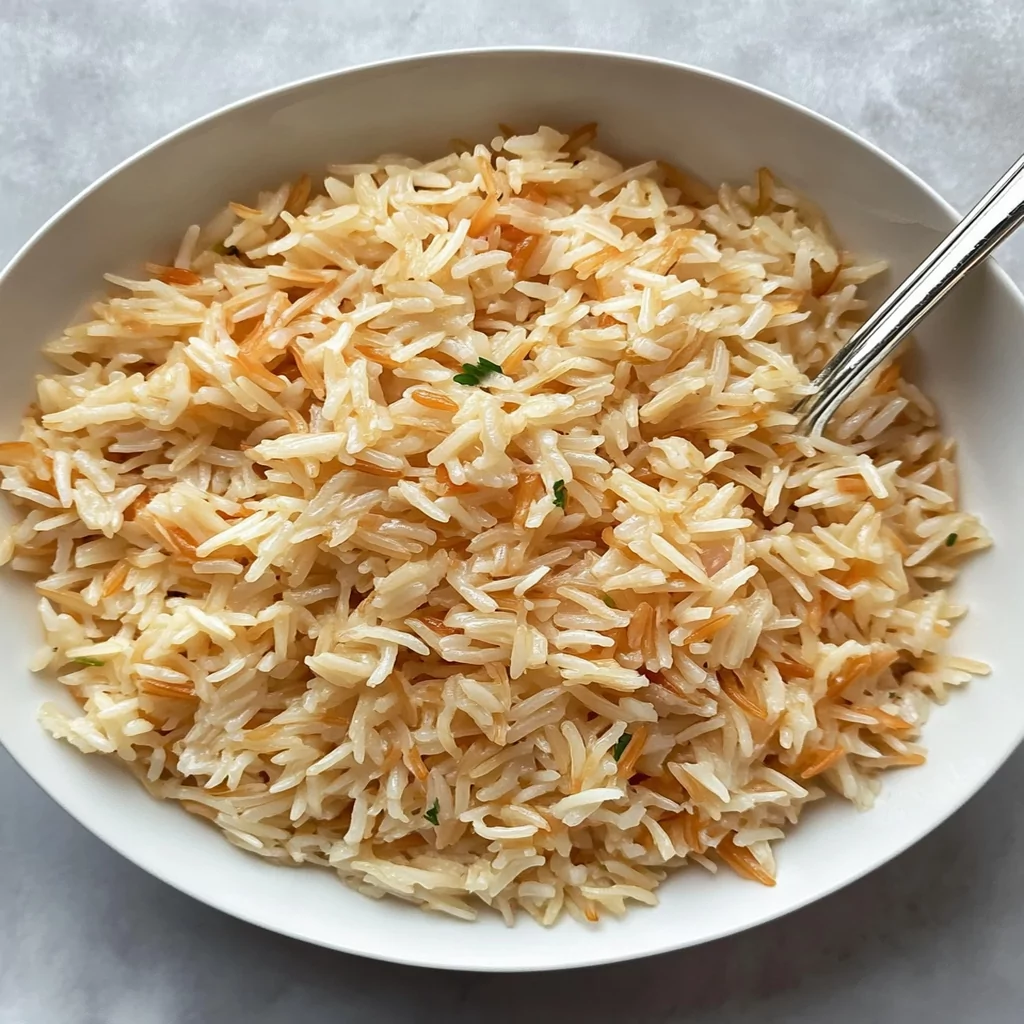
Tips and tricks
To perfect your rice pilaf, start with high-quality ingredients. Opt for long-grain varieties like basmati or jasmine for their distinctive aroma and taste. These types of rice are known for their ability to stay separate after cooking, making them ideal for pilaf recipes. Additionally, using homemade broth instead of water elevates the dish’s flavor significantly.
When sautéing aromatics like onions or garlic, use medium heat instead of high heat. This allows them to cook evenly without burning while releasing their natural sweetness into the oil or butter. A gentle sauté creates a flavorful base for your pilaf that enhances its overall taste profile.
Incorporating vegetables into your rice pilaf not only adds color but also provides nutritional benefits. Consider adding peas, carrots, or bell peppers during cooking for added texture and flavor. Vegetables contribute essential vitamins and minerals while making your dish more visually appealing.
Experiment with different spices to customize your pilaf according to taste preferences. Cardamom pods, cinnamon sticks, or even saffron can introduce unique flavors that set your dish apart from traditional recipes. Spice combinations allow you to create a signature dish that’s memorable.
Finally, always remember to fluff your cooked pilaf gently with a fork instead of stirring vigorously with a spoon. Fluffing helps maintain the grain separation while redistributing any trapped steam within the pot. This technique ensures each serving remains light and fluffy rather than dense and clumpy.
Suggestions for rice pilaf
Consider pairing your rice pilaf with proteins such as grilled chicken or lamb skewers for a complete meal experience. The mildness of pilaf complements grilled meats beautifully while providing a satisfying base on which to build flavors.
You can also serve it alongside rich stews or curries that benefit from the neutral backdrop of seasoned rice pilaf. The absorbent nature of the grains allows them to soak up sauces beautifully, making each bite deliciously cohesive.
For those looking for vegetarian options, serve your pilaf with roasted vegetables or chickpea salads as a filling option that still satisfies hunger pangs without meat protein additions.
If you’re hosting gatherings or potlucks, consider making larger batches of rice pilaf as it’s easy to prepare ahead of time and reheats well without losing quality—making it an excellent choice for entertaining guests.
Lastly, don’t forget about storage! Store any leftover rice pilaf in an airtight container in the refrigerator for up to four days; reheat it gently on low heat with a splash of broth or water added back in if necessary.
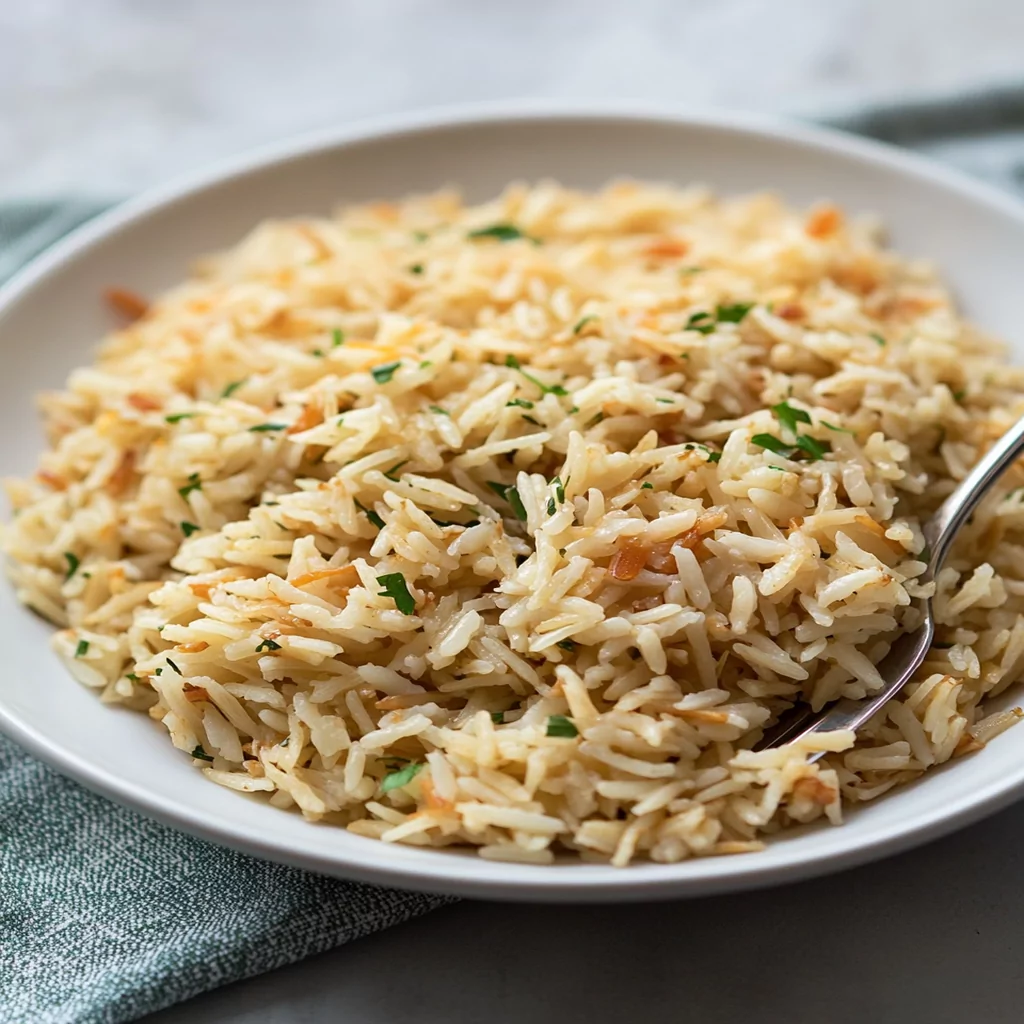
FAQs
What is rice pilaf?
Rice pilaf is a dish made by sautéing long-grain rice in butter or oil before simmering it in broth until tender. This method infuses flavor into each grain while maintaining their individual texture—a hallmark feature of this classic dish enjoyed worldwide.
How do I make my rice pilaf fluffy?
To ensure fluffy results when making rice pilaf, rinse your uncooked grains thoroughly before cooking to remove excess starch content that could lead to clumping during preparation processes; this helps maintain separation between each grain after cooking finishes.
Can I use other types of grains besides rice?
Yes! While traditional recipes typically call for long-grain white or brown rice varieties like jasmine or basmati respectively—feel free experimenting with alternatives such as quinoa farro bulgur wheat etc., just adjust cooking times accordingly based on chosen ingredient characteristics!
Is there any specific seasoning I should use?
Seasonings vary widely depending on personal preferences but commonly suggested choices include herbs (like thyme), spices (like cumin), aromatics (like garlic/onions) plus salt/pepper as needed; these additions enhance overall flavor profiles immensely!
Can I freeze leftover rice pilaf?
Absolutely! To freeze leftover portions securely pack cooled-down servings into freezer-safe bags/containers ensuring no air pockets remain inside so they won’t dry out later during thawing phases—enjoy up-to three months later whenever cravings hit again!
What dishes pair well with rice pilaf?
Rice Pilafs complement various main dishes including grilled meats/stews/curries/roasted veggies/chickpea salads—all harmonizing flavors together beautifully creating satisfying meals tailored towards different dietary preferences!
Conclusion
In summary, crafting an exceptional bowl of rice pilaf involves avoiding common mistakes such as not rinsing grains properly or neglecting adequate seasoning techniques while embracing helpful tips like utilizing high-quality ingredients and experimenting with different spices/vegetables based upon personal tastes/preferences throughout preparation phases!
Whether served alongside proteins stews/curries roasted vegetables/etc., this versatile side dish pleases palates across cultures—making it an ideal choice whether entertaining guests at home hosting gatherings alike! By mastering these key points highlighted above—ensuring delicious outcomes becomes achievable every single time one ventures into preparing this delectable culinary delight known simply as “rice pilaf.”
Print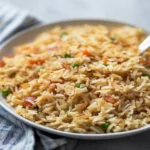
Rice Pilaf Recipe
- Prep Time: 10 minutes
- Cook Time: 20 minutes
- Total Time: 30 minutes
- Yield: Serves 4
Description
Rice pilaf is a delightful, aromatic dish that transforms simple long-grain rice into a flavorful side or main course. This easy recipe combines the savory essence of chicken or vegetable broth with sautéed onions and garlic, creating a fluffy, fragrant base that pairs perfectly with grilled meats, roasted vegetables, or can stand alone as a vegetarian delight. Customize your pilaf by adding nuts, spices, or even vegetables for an extra touch of flavor and texture. Impress your family and friends with this comfort food classic that’s sure to become a staple in your kitchen.
Ingredients
- – 1 cup long-grain white rice
- – 2 cups low-sodium chicken or vegetable broth
- – 1 medium onion, diced
- – 2 cloves garlic, minced
- – 2 tablespoons unsalted butter (or olive oil)
- – Salt and pepper to taste
- – Optional: spices like cumin or turmeric
Instructions
1. Sauté diced onion in butter over medium heat until translucent. Add minced garlic and cook for another minute.
2. Stir in rinsed rice, toasting it for 2-3 minutes until slightly golden.
3. Pour in broth and season with salt, pepper, and optional spices.
4. Bring to a boil, then reduce heat to low and cover. Let simmer for 15-20 minutes until liquid is absorbed.
5. Remove from heat and let sit covered for 5-10 minutes before fluffing with a fork.
Notes
Rinse the rice thoroughly to remove excess starch for fluffier results. Feel free to incorporate vegetables such as peas or carrots during cooking for added nutrition.
Nutrition
- Calories: 220
- Fat: 6g
- Carbohydrates: 42g
- Fiber: 1g
- Protein: 4g

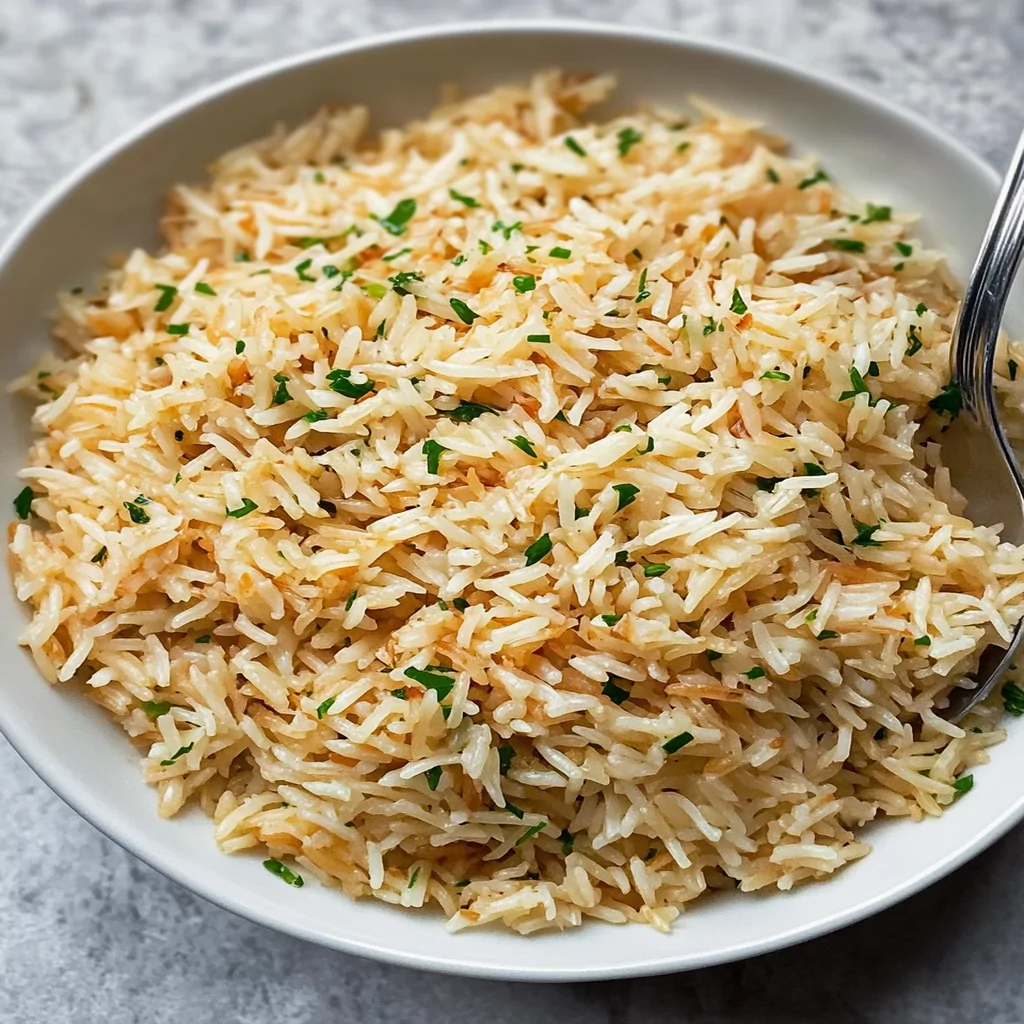
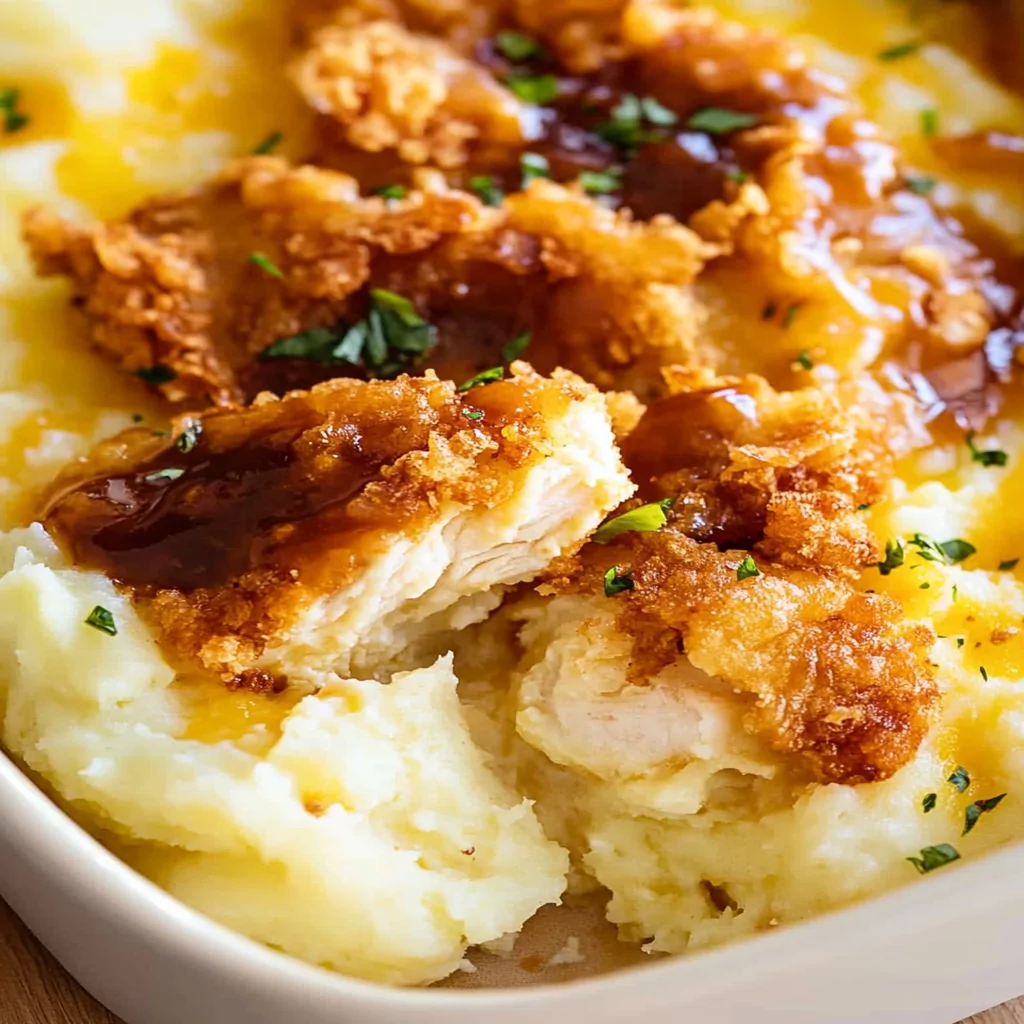
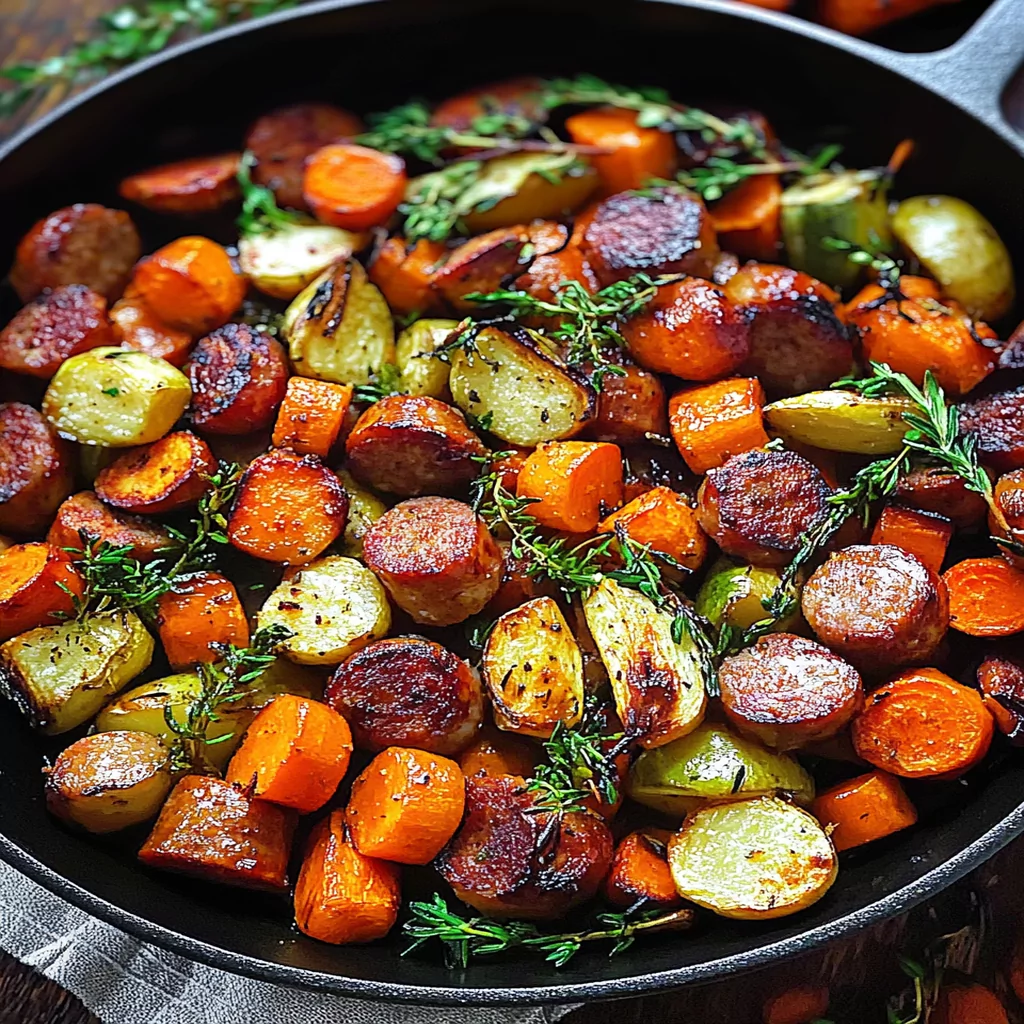
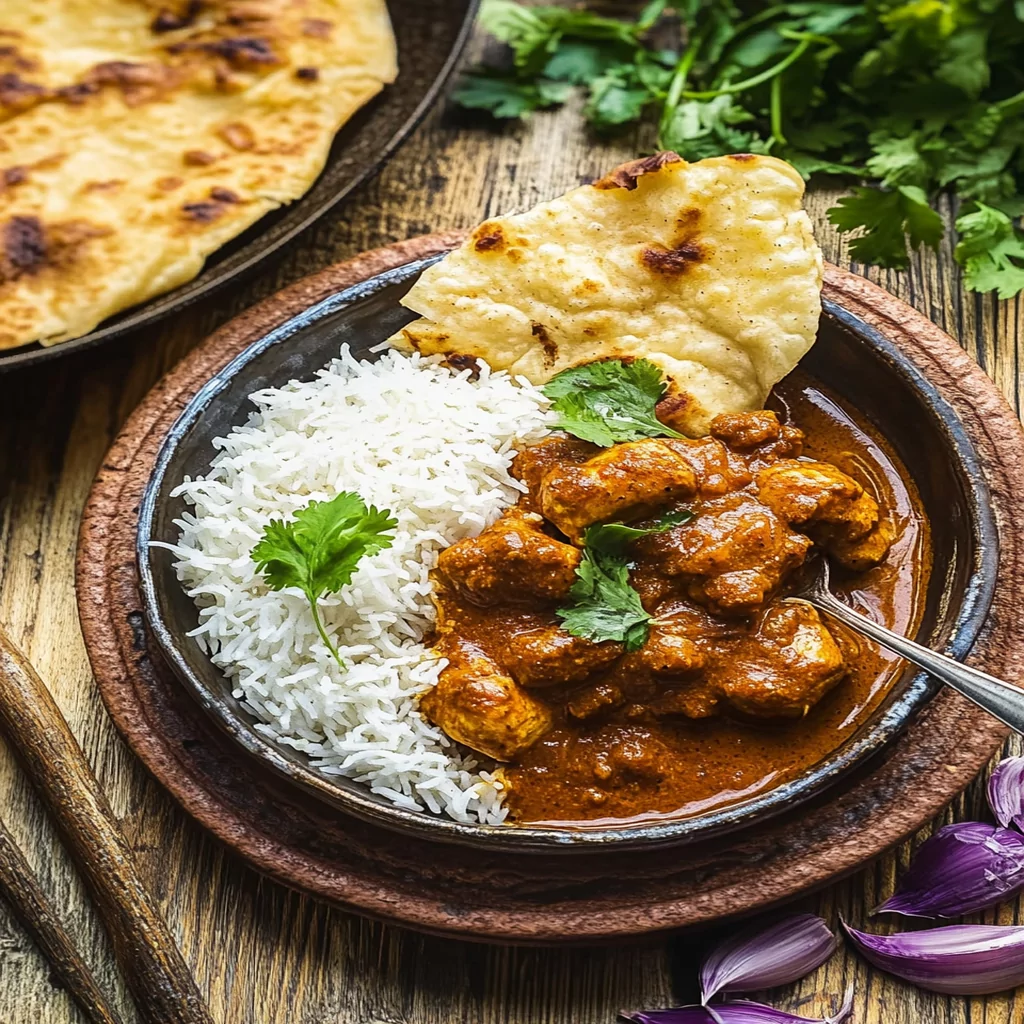
Leave a Comment